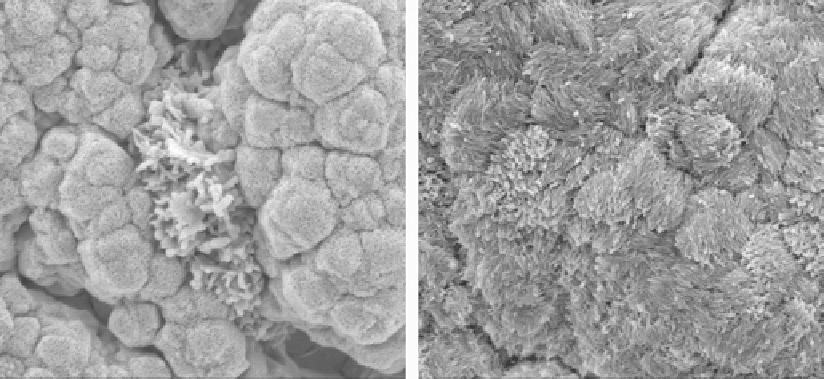Biomedical Engineering Reference
In-Depth Information
TABLE 7.4
Apatite Formation Time on Bioceramic Coatings in SBFs
Apatite
Formation(ks)
CoatingMethod
PhaseofCoating
SBF
Reference
Thermal CVD
HAp
Hanks' solution
21.6
(27)
Thermal CVD
α-TCP
Hanks' solution
1209.6
(27)
Thermal CVD
CaTiO
3
complicated surface
Hanks' solution
259.2
(68)
Thermal CVD
CaTiO
3
smooth surface
Hanks' solution
3628.8
(68)
Laser CVD
Hanks' solution
259.2
(28)
HAp, β-TCP
Plasma spraying
HAp
Kokubo solution
86.4
(69)
Sol-gel
HAp + TiO
2
Kokubo solution
691.2
(70)
formation in Kokubo solution.
(71)
In CVD, a spatial gap suitable to apatite formation can be
introduced by controlling the surface morphology of the bioceramic coatings.
The relationship between the crystallographic orientation of HAp coatings prepared by
CVD and apatite formation in SBF has been studied. Apatite formation on an HAp coating
oriented to the
c
-axis (i.e., the 〈002〉 direction) in Hanks' solution was faster than that oriented
to other directions. Preferential apatite formation on the
c
-face of HAp has been reported in
the immersion test of a highly oriented HAp sintered body in Kokubo solution.
(72)
Figure 7.30a
and b show the surface morphology of HAp coatings prepared by laser CVD oriented to
the
a
-axis (i.e., the 〈300〉 direction) after immersion in Hanks' solution for 259.2 and 604.8
ks, respectively. Although the apatite formation rate on the (300)-oriented HAp coating was
not high, apatite formation was observed at hollow places 259.2 ks after immersion and the
whole surface was covered with needlelike apatite crystallites 604.8 ks after immersion.
These results suggest that the hollow places and (002) preferred orientation in bioceramic
coatings enhance the apatite formation in SBF.
(a)
(b)
FIGURE 7.29
Surface morphology of HAp coatings prepared by thermal CVD after immersion in Hanks' solution for (a) 3.6 ks
and (b) 21.6 ks.














Search WWH ::

Custom Search